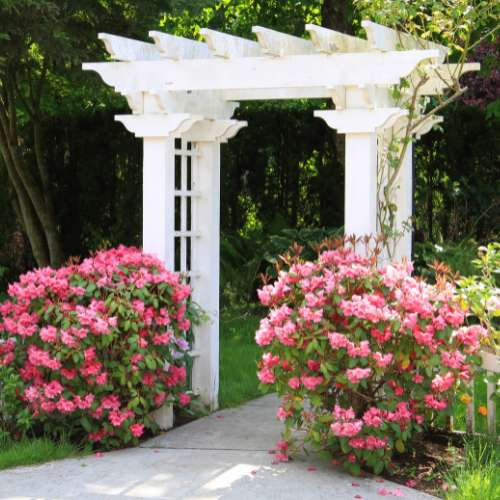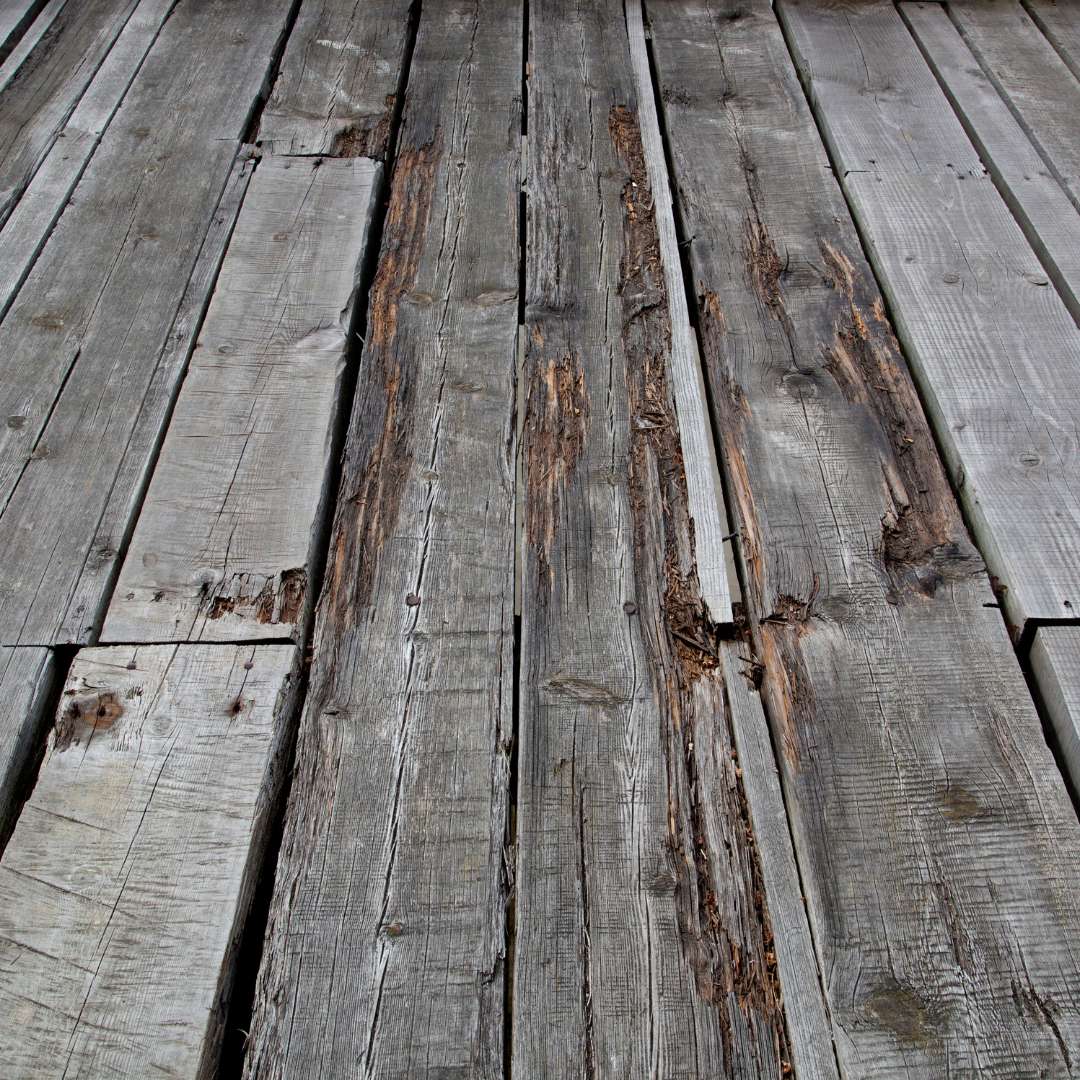Pergolas, those elegant outdoor structures, have captured the imaginations of homeowners and designers alike for centuries. These open-air structures, typically consisting of vertical pillars supporting crossbeams and an open lattice roof, provide not only a touch of architectural charm but also the promise of transforming your outdoor space into a haven of comfort and style. However, the magic of a pergola truly lies in its placement. It’s not just about having one; it’s about having it in the right place. The location of your pergola can significantly impact its functionality and aesthetic appeal.
Pros and Cons of Attached Pergolas
When contemplating the placement of your pergola, one crucial decision to make is whether to attach it to your house or have it stand as a detached structure. Attached pergolas offer a range of advantages, starting with their seamless integration into your home’s existing architecture. By connecting your pergola to your house, you create a harmonious transition from indoor to outdoor spaces, blurring the boundaries and enhancing your property’s aesthetic appeal. Furthermore, attached pergolas can provide increased shade and shelter, as they leverage the house’s structure to offer extra protection from the elements. However, it’s essential to consider the cost implications and potential structural adjustments required when attaching a pergola to your home. This choice demands careful planning and assessment of your budget and home’s structural capacity to ensure a successful integration that complements your lifestyle and home design.
Pros and Cons of Detached Pergolas
Detached pergolas, on the other hand, present homeowners with a different set of advantages and considerations. One notable advantage is the flexibility they offer in placement and design. Detached from the house, these pergolas can be strategically positioned anywhere in your outdoor space, allowing you to take full advantage of picturesque views or create unique outdoor focal points. They provide a canvas for creative landscaping, offering opportunities to incorporate gardens, benches, pathways, or other landscaping features that can transform your outdoor area into a captivating retreat. However, it’s important to be aware of the potential maintenance and construction challenges that come with detached pergolas. They may require additional structural support, and ongoing maintenance can be more involved due to exposure to the elements from all sides. Weighing these pros and cons will help you make an informed decision when determining the best placement for your pergola.
What is the Purpose of a Pergola
Its purpose is to blend functionality with aesthetics, offering shade, shelter, and an elegant backdrop for various outdoor activities, from leisurely reading to alfresco dining and entertaining guests. Ultimately, a pergola’s purpose is to transform your outdoor area into a captivating and comfortable haven where you can enjoy the beauty of nature in style.
Shade and Relaxation
One of the primary purposes of a pergola is to offer a sanctuary of shade and relaxation within your outdoor space. By incorporating comfortable seating, cushions, and perhaps even some soft lighting, you can transform your pergola into an inviting outdoor lounge where you can unwind, read a book, or simply enjoy the company of friends and family. Beyond its role as a cozy retreat, a pergola excels at providing much-needed relief from the sun’s relentless rays, making it an ideal spot for basking in the outdoors without the discomfort of excessive heat. Whether it’s a sunny summer afternoon or a warm spring day, your pergola can be the perfect refuge, allowing you to savor the beauty of the outdoors while staying comfortably shaded and relaxed.
Entertaining and Dining
Pergolas are not just about personal relaxation; they also play a pivotal role in transforming your outdoor space into an entertainer’s paradise. With its inviting ambiance and defined structure, a pergola provides an excellent setting for hosting gatherings and parties. You can create an al fresco oasis complete with seating arrangements, tables, and perhaps even a bar, turning your pergola into a charming outdoor entertainment hub. Moreover, many homeowners opt to incorporate outdoor cooking and dining spaces under their pergolas, allowing them to savor the joys of outdoor dining while enjoying the shade and ambiance. From casual weekend barbecues to elegant dinner parties, a pergola adds a touch of sophistication and practicality to your outdoor entertaining endeavors, making every occasion a memorable one.
Gardening and Greenery
For those with a green thumb and a love for the outdoors, a pergola can serve as the perfect canvas for gardening and greenery. The lattice roof of a pergola is an ideal support structure for climbing plants and vines, adding a touch of natural beauty to your outdoor space. As these lush greens grow and intertwine with the pergola’s structure, they create a living, breathing canopy that not only offers shade but also infuses the area with a sense of tranquility and serenity. Beyond this, a pergola can be the centerpiece of your own natural oasis. By carefully selecting plantings and incorporating elements like hanging gardens or potted plants, you can craft a rejuvenating escape that connects you with the sights, scents, and sounds of nature, making your pergola a haven for relaxation and meditation amidst the beauty of the outdoors.
Dimensions for a Pergola
Choosing the right dimensions for your pergola is a crucial step in its design and placement.
Standard vs Custom Sizes
You’ll often face the choice between standard and custom sizes. Determining the right size for your needs is paramount – it should align with your intended purpose, whether it’s for intimate gatherings or spacious outdoor dining. Beyond aesthetics, practical considerations come into play, such as the available space in your yard or the proximity to your house.
Additionally, it’s vital to adhere to local building regulations, which may dictate size limits and setbacks from property lines. Striking the right balance between your vision and regulatory requirements ensures that your pergola not only serves its intended purpose but also complies with local codes, ensuring a safe and harmonious addition to your outdoor space.
Height and Clearance
When designing your pergola, paying attention to its height and clearance is essential for both comfort and functionality. Ensuring sufficient headroom beneath the pergola is crucial to create a spacious and inviting atmosphere. It allows people to move freely and comfortably underneath without feeling cramped. Furthermore, if you plan to incorporate climbing plants or vines, having ample height becomes even more critical. This extra space not only accommodates the mature growth of plants but also maintains a feeling of openness and airiness, preventing the pergola from feeling overcrowded as the greenery flourishes.
Spacing and Layout
The spacing and layout of your pergola play a pivotal role in determining its overall functionality and aesthetic appeal. When arranging seating and amenities within the pergola, thoughtful planning is key. Consider the purpose of your pergola – whether it’s for intimate gatherings, dining, or relaxation – and arrange furniture accordingly. A well-thought-out layout ensures that the space is both inviting and practical. Moreover, proper spacing is not just about accommodating furniture; it also ensures adequate airflow and ventilation.
Asses the Area Where you Plan to Build Your Pergola
As you contemplate the placement of your pergola, it’s essential to thoroughly assess the area where you intend to use it most. First and foremost, consider the sun exposure and direction. Understanding the sun’s patterns throughout the day is paramount. By noting where the sun rises and sets and how it moves across your outdoor space, you can strategically position your pergola to maximize or minimize sunlight based on your goals. Whether you seek a cozy spot to bask in the morning sun or a shaded retreat for scorching afternoons, this consideration ensures that your pergola is precisely where you need it to be.
Don’t overlook wind and climate considerations. If your location is prone to strong winds, especially during certain seasons, take measures to protect against them. The pergola’s design and choice of materials can play a crucial role in providing shelter and stability. Moreover, choose materials that are suitable for your climate, ensuring longevity and durability. Lastly, consider the balance between privacy and views. Ensure that your pergola offers the level of seclusion you desire from neighbors or the street while preserving any scenic views or creating new focal points within your outdoor space. A well-thought-out assessment of these factors ensures that your pergola placement aligns perfectly with your outdoor living goals and the unique characteristics of your environment.
Costs of Building a Pergola
When embarking on your pergola project, it’s essential to carefully consider the financial aspects. The first component to evaluate is material costs. Depending on your choice of materials, whether it’s wood, metal, vinyl, or others, prices can vary significantly. Quality and availability also play a role, with premium materials often coming at a higher price. Similarly, labor costs can vary based on whether you opt for a DIY approach or hire professionals. Obtaining quotes from contractors can help you gauge the expenses involved and make an informed decision.
In addition to material and labor costs, there are other expenses to factor in. Permits and regulations may be necessary, so it’s crucial to understand your local requirements and budget accordingly. Moreover, consider any optional features and accessories you wish to incorporate into your pergola, as these can add to the overall cost. To navigate these financial considerations effectively, it’s advisable to set a realistic budget from the outset. Estimate the total project cost, including materials, labor, permits, and extras. Allocating funds for contingencies ensures that unexpected expenses won’t derail your project, allowing you to create the perfect pergola without breaking the bank.
Choosing the perfect pergola placement is a multi-faceted decision that balances aesthetics, functionality, and budget. Whether attached or detached, its purpose – be it for relaxation, entertaining, or dining – should guide your design choices, including dimensions, height, and spacing. Assessing the local climate, sun exposure, and privacy considerations ensures your pergola fits seamlessly into your outdoor space. Don’t forget the financial aspect; budgeting for materials, labor, permits, and extras is crucial. Above all, take your time to make an informed decision. Contact experts like Craiger Custom Design for guidance tailored to your unique needs. With careful consideration, your pergola can become the centerpiece of your outdoor haven, enhancing your lifestyle and creating cherished memories for years to come





